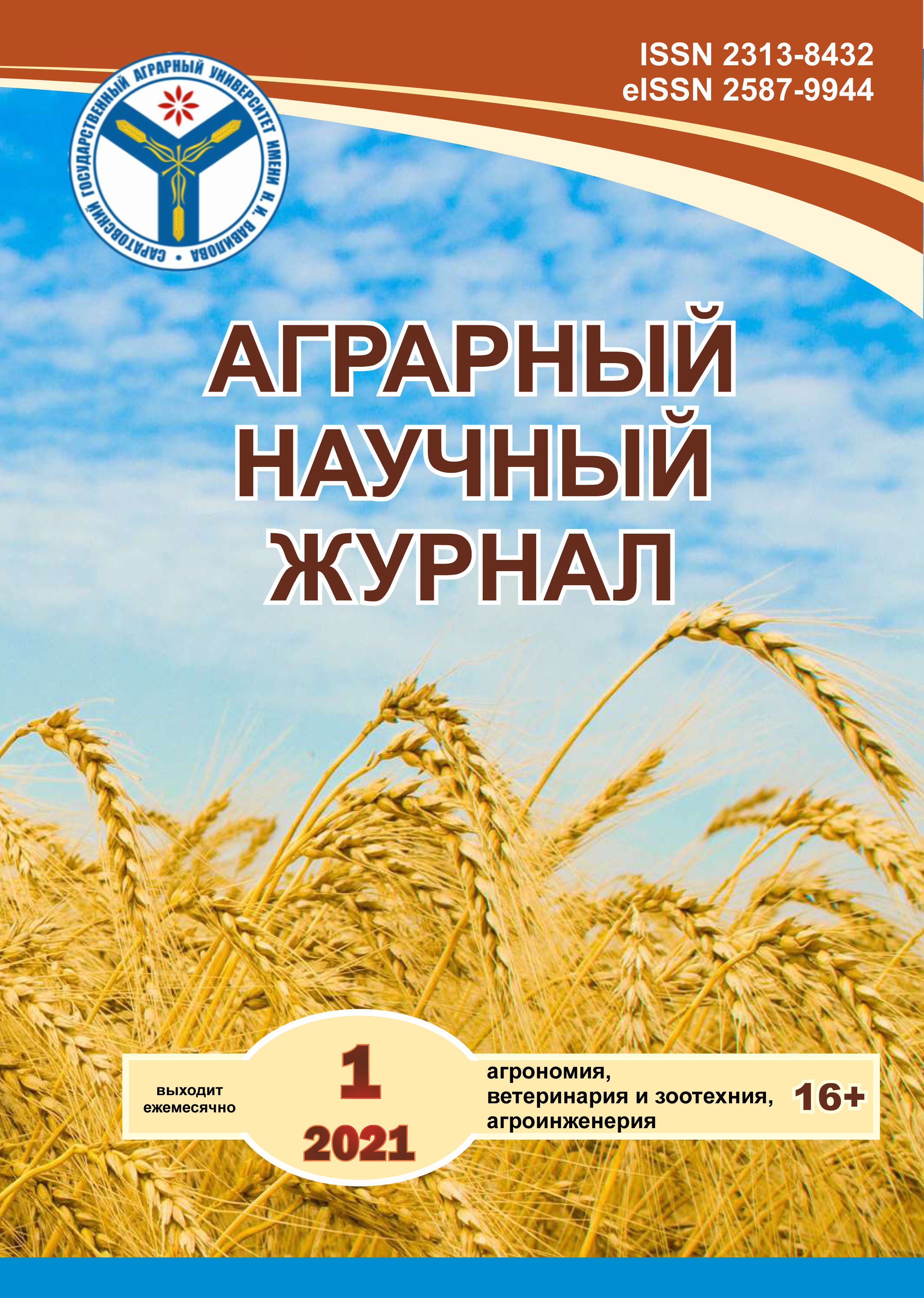Influence of the seeding rate of seeds on the productivity of various corn hybrids in the conditions of the Saratov Right Bank
DOI:
https://doi.org/10.28983/asj.y2021i1pp8-13Keywords:
hybrid, corn, productivity, seeding rate, forage reserveAbstract
The data of long-term research aimed at improving the forage reserve in order to provide livestock with high-grade concentrated green fodder and silage are presented. The necessity of selection and comparative assessment of maize hybrids of different early maturity and improvement of the basic methods of cultivation technology has been substantiated. The seeding rates slightly changed the field germination rate. On average for 2017–2019 at a seeding rate of 50 thousand seeds per 1 hectare by the panicle-sweeping phase, the leaf surface of the mid-early hybrid Rainbow was 31.2 thousand m2/ha, which is 9.5% higher compared to the early-ripening hybrid Mashuk 185 MV ( 28.5 thousand m2/ha) and 14.3% higher compared to the ultra-early hybrid RNIISK-1 (27.3 thousand m2/ha). With an increase in the seeding rate over 50 thousand seeds per hectare, the leaf surface of all hybrids increased and was maximum at 70 thousand seeds per hectare. The minimum leaf area was at a seeding rate of 40 thousand seeds per hectare. Similarly to the formation of the leaf surface, the accumulation of green and dry biomass took place depending on the seeding rate in the ultra-early maize hybrid RNIISK-1. In the early-maturing hybrid Mashuk 185 MV and the mid-early hybrid Raduga, the accumulation of green and dry biomass did not depend on the seeding rate. Such features of the growth and development of maize hybrids, depending on the seeding rate, influenced the structure and size of the grain yield.
Downloads
References
Гусев Н.А., Каринова Ф.Г. Водообмен и засухоустойчивость растений // Развитие теоретических и экспериментальных исследований в борьбе с засухой. – Ставрополь, 1982 – С.78–79.
Доспехов Б.А. Методика полевого опыта. – М., 1985. – С. 35–112.
Дружкин А.Ф. Продуктивность различных гибридов кукурузы в условиях орошения в Саратовской области. – Саратов, 2004. – 146 с.
Кривобочек В.Г., Стаценко А.А., Рязанцев М.С. Оценка посевных качеств семян // Аграрный научный журнал. – 2018. – № 7. – С. 10–13.
Методика государственного сортоиспытания сельскохозяйственных культур. – М.: Колос, 1971. – 233 с.
Ничипорович А.А. Фотосинтез и теория получения высоких урожаев // Тр. Ин-та физиологии растений им. К.А. Тимирязева. – М.: Изд-во АН СССР, 1966. – 48 с.
Рекомендации по методике проведения наблюдений и исследований в полевом опыте / НИИСХ Юго-Востока. – Саратов: Приволж. кн. изд-во, 1973. – 223 с.
Худенко М.Н. Кормовые культуры. – Саратов, 2003. – 230 с.
Downloads
Published
Issue
Section
License
Copyright (c) 2021 The Agrarian Scientific Journal

This work is licensed under a Creative Commons Attribution-NonCommercial 4.0 International License.








